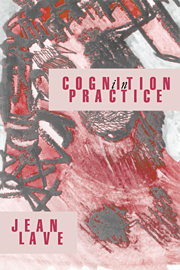2 - Missionaries and cannibals (indoors)
Published online by Cambridge University Press: 02 December 2009
Summary
In the conceptual schema of cognitive psychology, cognitive transfer (or its absence) is held responsible for continuity (or discontinuity) of activity across situations. This genre of research speaks only in hypothetical voice about what cognitive activities outside school might be like, relying on the concept of transfer to provide a plausible account of relations between schooling, the workplace, and the everyday lives of jpfs. Learning transfer is assumed to be the central mechanism for bringing school-taught knowledge to bear in life after school.
Because transfer is so central, it seems logical to begin an investigation of everyday cognitive activity with a reexamination of this formulation of relations between cognition and the everyday world. These relations are reflected in the typical practices of research on learning transfer, broadly structured in sequences of laboratory experiments in which subjects are set tasks of formal problem solving. Normative models for correct solution are used to evaluate subjects' performances, and these evaluations of cognitive preparedness are extrapolated from experimental to everyday situations. I have drawn on several reports of experiments on learning transfer in order to analyze the culture of transfer research. “Culture” here includes both the cultural context within which the experimental enterprise is embedded and its customary beliefs, practices and interpretive forms. Together they help to explain the conventional conceptual boundaries which shape particular sets of meanings of “context,” “culture,” “knowledge,” and the social world.
- Type
- Chapter
- Information
- Cognition in PracticeMind, Mathematics and Culture in Everyday Life, pp. 23 - 44Publisher: Cambridge University PressPrint publication year: 1988



